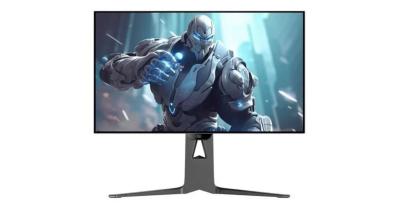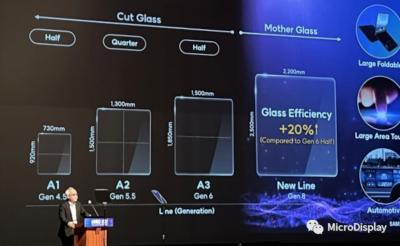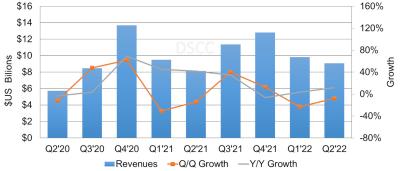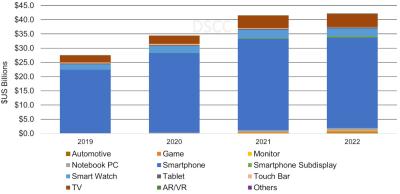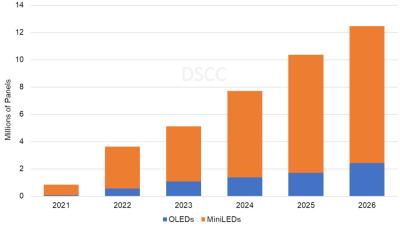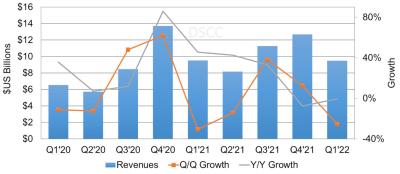OLED (Organic Light Emitting Diode) technology offers bright, efficient and fast displays, outperforming LCD display. OLEDs deliver the best picture quality ever and are used in many devices, from smartwatches through smartphones and tablets to TVs and more.
OLEDs are also used to enable high-end monitors that offer excellent contrast, image quality, colors and new form factors. This article will explain the benefits, the current status and the future of OLED monitors.
OLED monitors vs LCD monitors
- OLED provide a better image quality with a much higher contrast (true blacks), wide color gamut, better viewing angles and a much faster refresh rate (great for gaming!)
- OLED panels are much thinner and lighter compared to LCD panels
- OLED monitors consume less power - as only lit pixels draw energy on OLED displays
- An OLED monitor can be flexible, bendable, rollable - and transparent
OLED monitors and the burn-in challenge?
Of course OLED technology is not perfect. One of the major drawbacks of an OLED display is image retention / burn-in. In an OLED display each pixel is driven independently and each pixel ages differently - and as brightness is reduced with use (the lifetime of OLED materials is limited), we have burn-in problems.
For mobile phones and TVs this is less of a problem - but in a computer user interface many UI elements are quite fixed (toolbars, icons, etc) which means that burn-in is a real problem. There are some technologies to handle this problem - for example by measurement and compensation, or by adopting a tandem architecture to increase the lifetime. In addition user-interface designers can design a user interface that will be more suited for OLED displays.
OLED monitors on the market
OLED technology is very popular in smartphones, wearables and TVs - and in recent years OLED monitors has entered the market as display makers now target this market, starting with high-end models aimed towards gaming and content creation.
Display makers LG Display, Samsung Display and others target premium applications and mostly produce OLED panels in the range of 27-inch to 42-inch. One example of an OLED monitor is the ViewSonic VX2776-2K-OLED, based on a 26.5" 1000 nits (HDR) 2560x1440 240Hz 0.03 ms G2G VRR WOLED display (made by LGD).
Asus has several OLED monitors. The PG32UCDM and PG34WCDM are two gaming monitors, each based on a different OLED panel technology. The PG32UCDM uses a 32" 4K (3840x2160, 16:9) 240Hz VRR 1000 nits (HDR peak) QD-OLED panel, produced by Samsung Display. The PG34WCDM monitor, on the other hand is based on a 34" 3440x1440 (21:9) 240Hz VRR 1300 nits (HDR peak) MLA (microlens) WOLED curved (800R) panel, produced by LG Display.
Samsung has its own high-end OLED monitor, the Odyssey OLED G95SC. This is an ultra-wide gaming monitor based on a 49-inch 5120x1440 resolution, 240Hz, 1800R curved QD-OLED panel. The G95SC is now shipping, for around $2,000. LG also offers OLED monitors, including the UltraGear 27GR95QE-B a gaming monitor with a 27" 2560x1440 240Hz 0.3ms (GtG) response time OLED display. The 27" UltraGear OLED monitor is now shipping for around $850.
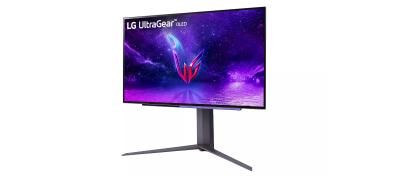
Click here for our comprehensive list of OLED monitors.
Further reading
RAPT develops unique touch solutions for OLED monitors and signage displays
The COVID-19 pandemic created an increased demand for high quality IT solutions, including monitors and collaborative tools, which prompted OLED display makers to start offering solutions for this market for applications like computer monitors, signage and more.
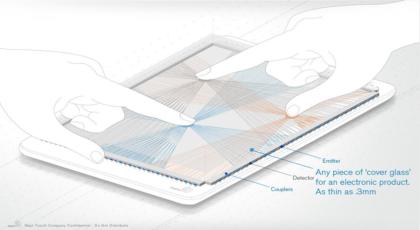
OLED displays that are 20-inch or more suffer from incompatibility with standard capacitive touch, because the thin OLED panel results in large parasitic capacitive coupling with the touch surface. The dynamic driving of OLEDs (where only lit pixels draw current) further reduces the capacitive touch performance by introducing unpredictable “display pattern noiseâ€. These issues are easily mitigated in small area displays, but as OLEDs increase in size, the performance and costs of capacitive solutions suffer.
Samsung Display's CEO confirms plans for a 8-Gen IT OLED production line, to begin operations in 2024
Samsung Display's CEO Choi Joo-sun says that the company sees a great potential for OLED displays in the IT market (mainly notebook and monitor displays), and that Samsung is building a new 8-Gen (2200x2500 mm) production line which will begin production in 2024. The glass efficiency at 8-Gen (uncut glass) will be 20% higher compared to Samsung's 6-Gen lines.
This new fab was already reported last year, but this is the first time we officially hear a commitment from SDC. According to DSCC, there are over 10 8.5-Gen OLED lines under consideration now in the industry, as demand for OLED panels for laptops, tablets and monitors is o the rise. Samsung is the current leader in OLED IT displays.
LG is developing medium-sized WOLED panels for gaming monitors
Earlier this month we reported that LG Display aims to start making 20-inch OLED panels, but we did not know the technology that LGD will adopt - WOLED (from its 8.5-Gen TV lines) or RGB (from its pOLED 6-Gen lines).
LGD now says that it is indeed developing panels for gaming monitors, with sizes ranging from 20-inch to 30-inch. The company also disclosed that these will be WOLED panels, produced at its 8.5-Gen lines. LGD also confirms that the first panels will be released by the end of 2022.
DSCC: OLED panels shipments declined 3% in Q2 2022, but revenues increased 12%
DSCC says that in Q2 2022, OLED panel revenues increased 12% compared to Q2 2021, while shipment units declined 3%. Fewer OLEDs were shipped, but revenues increased as we've seen an increased growth in high value panels (gaming, monitors, laptops, automotive, etc) and also an improved form factor adoption in smartphones.
In Q2 2022, smartphones remained the largest OLED application with a 76% unit and revenue share. OLED smartwatches had a 16% unit share (and a 6% revenue share), and OLED TVs had a 11% revenue share (up from 8% in Q1 2022).
Is printed-OLED producer JOLED on the brink of bankruptcy?
JOLED (Japan OLED) was established in August 2014 by Japan Display, Sony and Panasonic with an aim to become an OLED medium display producer. Following years of R&D and initial production, the company initiated mass production of its OLEDIO panels in 2021 at its new 5.5-Gen production line in Nomi, Ishikawa Prefecture, Japan.
JOLED's panels appeared on the market, but only for high-end applications such as LG's professional monitor range. According to a new report from Korea, the company did not manage to find a new investor and is now on the verge of bankruptcy.
DSCC: the OLED market will grow 2% in 2022, led by strong demand for IT panels
DSCC estimates that the OLED market will increase 2% in 2022, to reach $42 billion. Revenues for smartphones, the leading OLED application, will actually decline by 4%, but this will be offset by increases in other applications.
In fact, some applications will experience very fast growth: OLED monitors (641% unit growth, 279% revenue growth), OLED laptops (64% units, 39% revenue) and automotive displays (73% units, 68% revenue).
Technical challenges and price wars delay the industry's 8.5-Gen OLED IT displays production lines
Following strong demand for IT devices, and Samsung's success in the OLED laptop market, OLED makers have began to plan building new OLED production lines specifically for IT applications: laptops, tablets and monitors.
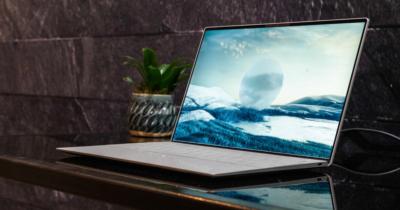
Several OLED makers, including Samsung, LG and BOE, are considering building 8.5-Gen production lines for this market. In fact DSCC estimated that there are 11 such lines under development right now. But it turns out that this is not so simple as designing the evaporation equipment for larger substrates is a challenge.
DSCC sees 2.4 million OLED monitor panels shipping in 2026, up from 600,000 in 2022
DSCC says that it expects the advanced monitor category to grow 328% in 2022, to reach 3.6 million panels. OLED monitor shipments will jump 641%, to reach 600,000 units. The growth in OLED shipments will continue, but even in 2026, OLEDs will still take a small part of the market segmented, which is dominated by mini-LED LCDs.
In 2022, DSCC sees QD-OLED panels to grab a 27% market share, while WOLEDs have a lead with a 52% market share. In total, OLEDs will have a 15% market share of the advanced monitor market.
DSCC: the OLED market remained flat in Q1 2022 at $9.5 billion
DSCC says that global OLED revenues in Q1 2022 were around $9.5 billion, the same as in Q1 2021, even though unit shipments declined 4%.
Smartphone remained the leading OLED application, with a 79% revenue share, even though shipments decreased 8% (and revenues decreased 3%). The second largest application by shipments is wearables (16% in Q1 2022 by shipments and in 6% market share by revenues).
A study by LG Display shows that OLED is the optimal gaming display technology
LG Display says that according to an original research it has conducted, OLED is the optical gaming display technology.
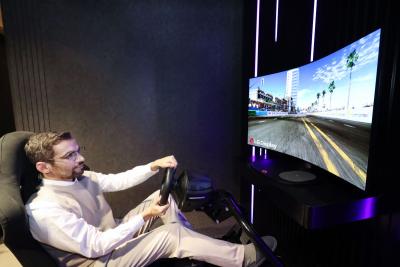
In this research, several gamers played different gaming genres on LCD and OLED displays, and on curved and flat displays. The study results show that a gamer’s reaction time can be improved by using OLED, while a display’s curvature provides a more immersive gaming experience.
Pagination
- Previous page
- Page 5
- Next page
